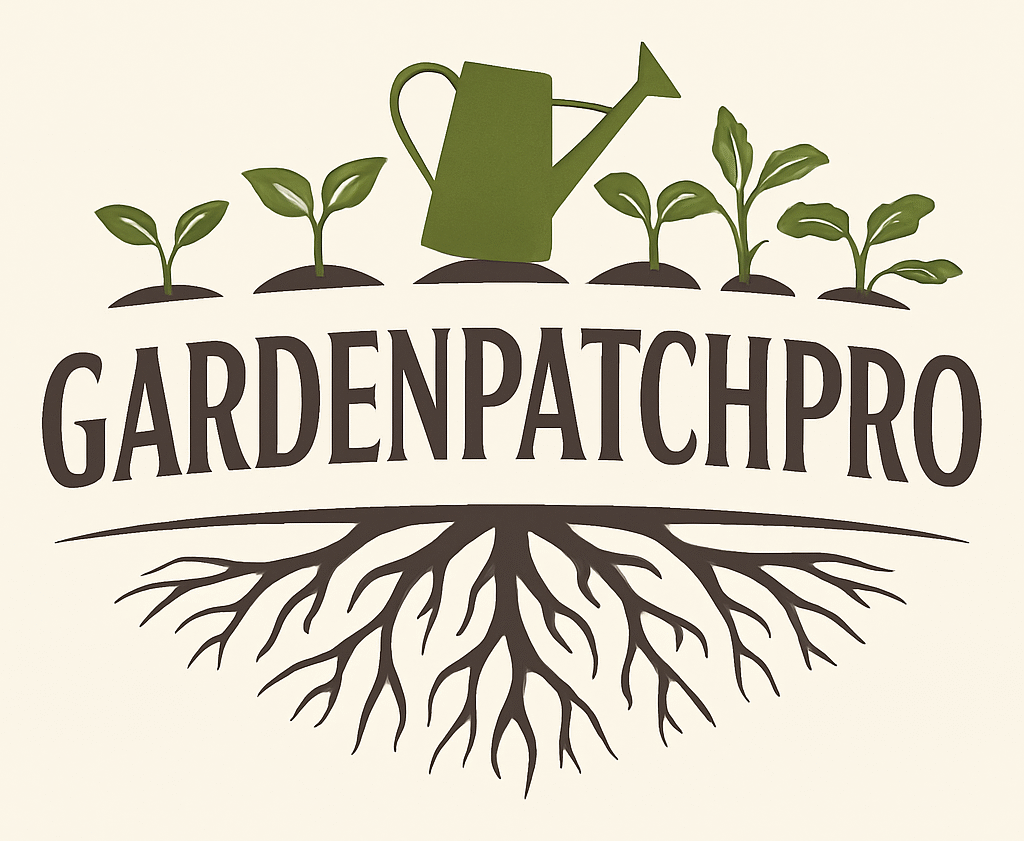8 Fruit Trees Perfect for Small Gardens and Urban Spaces
Growing fruit trees can add beauty and fresh produce to any garden or yard. Many varieties are suited to a wide range of climates and spaces, making them a rewarding choice for gardeners of all levels.
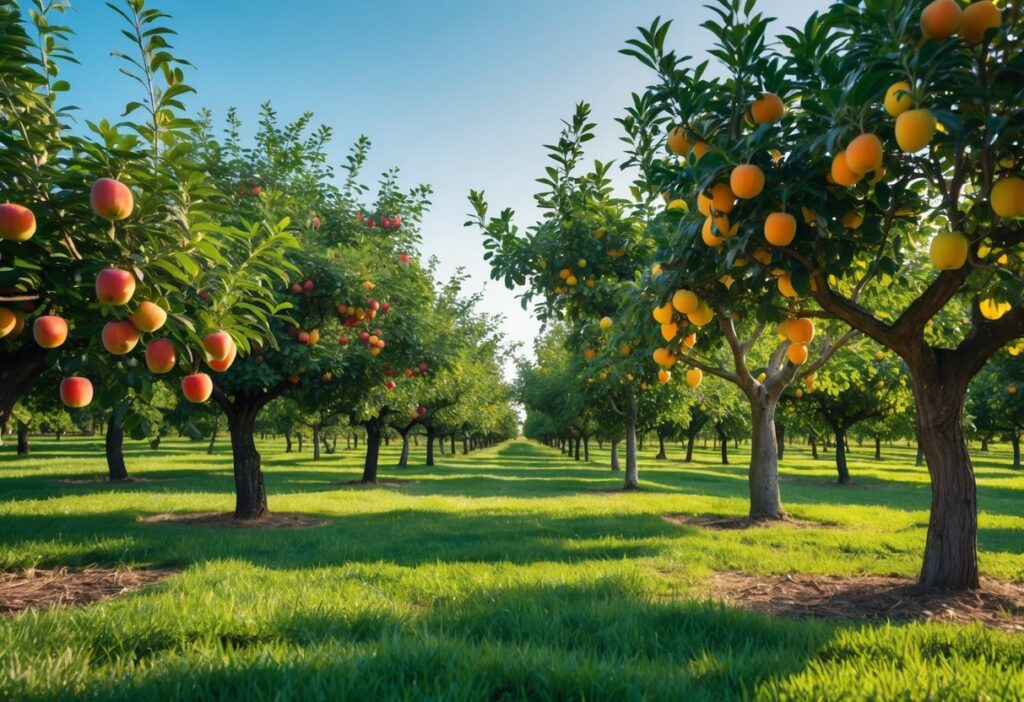
Choosing the right fruit trees depends on factors like climate, soil, and space, which together determine how well the trees will grow and produce fruit. Understanding these basics helps gardeners select the best options for a healthy, fruitful harvest.
1) Apple Trees – popular and widely grown in home gardens
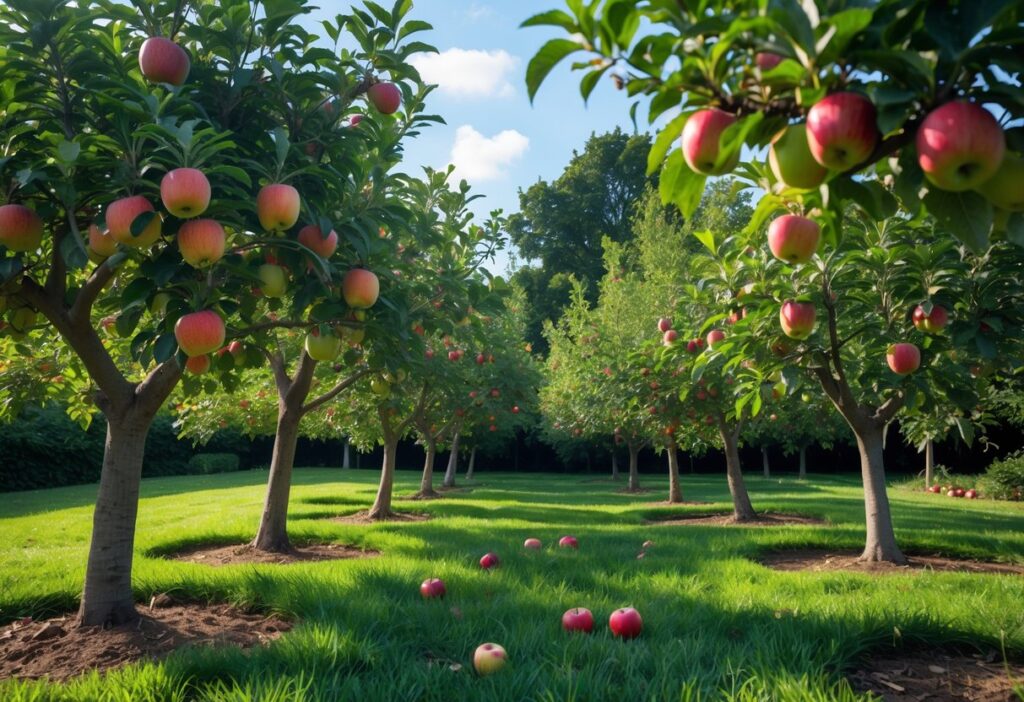
Apple trees are a common choice for home gardens due to their fruit and beauty. They grow well in many climates but need enough cold hours to produce fruit.
In USDA Zone 8, some apple varieties like Gala and Fuji are better suited. Gardeners often plant two or more types to help with pollination and fruit production.
Apple trees come in various sizes, from dwarf types to larger standard trees. They need regular care, including pruning and pest control, to stay healthy.
For more details on apple varieties for Zone 8, see the guide on fruit trees for Zone 8 gardeners.
2) Cherry Trees – ideal for fresh eating and baking

Cherry trees produce two main types of fruit: sweet cherries and sour cherries. Sweet varieties like Bing and Rainier are great for fresh eating because of their juicy, firm flesh. Sour cherries, such as Montmorency, work well for baking and preserves due to their tart flavor.
Growing cherry trees needs good sunlight and well-drained soil. Some sweet cherries require a pollination partner to bear fruit. Dwarf varieties may start producing earlier than standard trees.
Proper care, including watering and pruning, helps increase fruit yield. Selecting the right variety based on climate and use ensures a successful harvest of delicious cherries for both fresh eating and cooking. For more details, see best cherry tree varieties for fresh eating.
3) Peach Trees – known for their juicy, sweet fruits
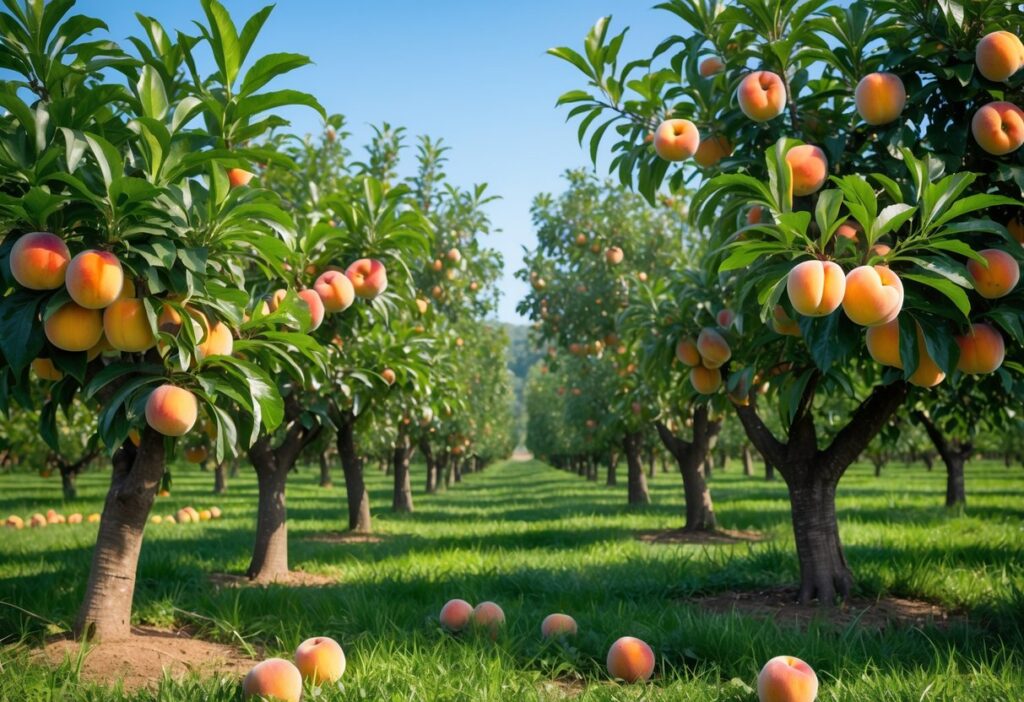
Peach trees are valued for their sweet, juicy fruits. They grow best in warm, temperate climates and can reach 10 to 20 feet tall. The fruit has fuzzy skin, soft flesh, and a single pit inside.
Many varieties, like Elberta and Redhaven, offer different flavors and harvest times. Some peaches are freestone, meaning the flesh separates easily from the pit.
Peach trees need full sun and well-drained soil to thrive. They also require proper watering and pruning for healthy growth and good fruit production. Some types, like Flordaking, do well in warmer zones.
More details on popular peach trees and care tips are available at 40 Types of Peach Trees.
4) Pear Trees – suitable for many climates and uses
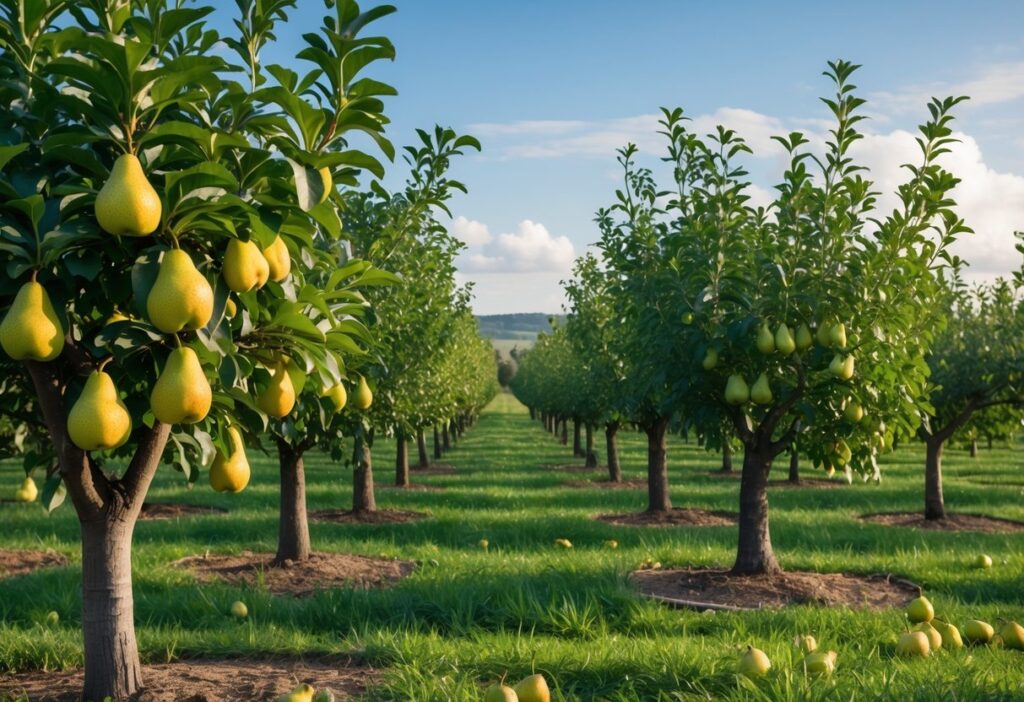
Pear trees grow well in many different climates. Some varieties tolerate cold winters, while others do better in warmer areas. This makes them a good choice for many gardeners.
They are also versatile in how they are used. Pears can be eaten fresh, cooked, or canned. Certain types work well for baking or drying.
Most pear trees need a pollinator nearby to produce fruit. They usually start bearing fruit between three and ten years after planting. Choosing the right variety depends on your climate and space.
For more details on suitable pear types by climate, see the guide on the best types of pear trees for your climate.
5) Plum Trees – versatile and easy to grow
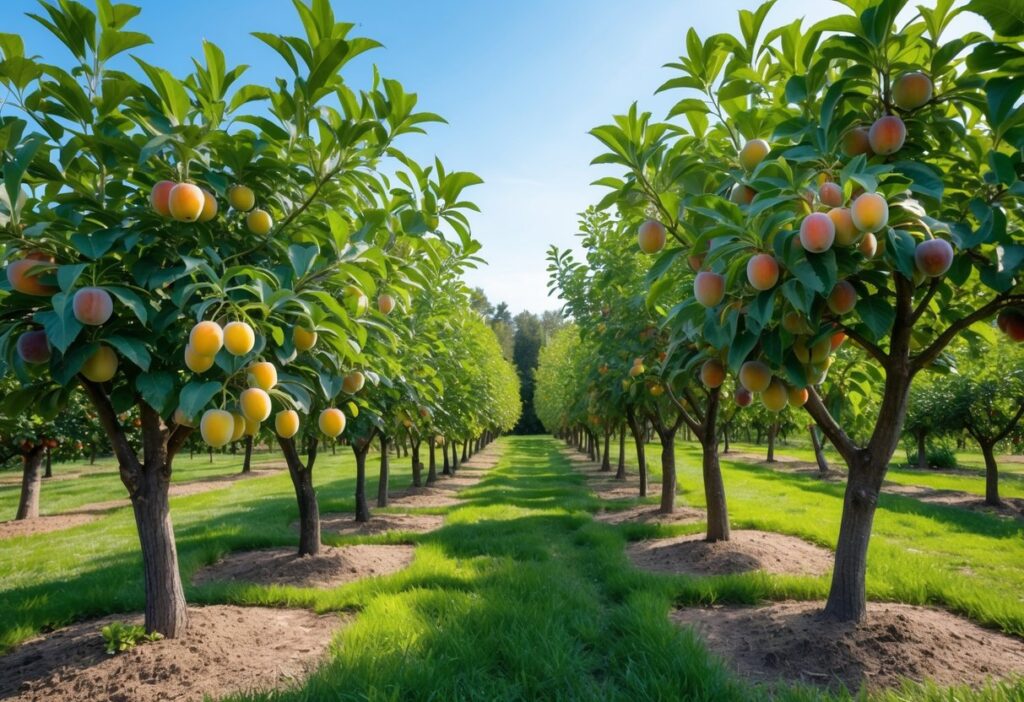
Plum trees are known for being versatile and simple to care for. They can grow in many climates and soil types. This makes them a good choice for gardeners of all skill levels.
They produce sweet, juicy fruit that is great fresh or preserved. Plum trees also offer pretty blossoms in spring, adding beauty to any garden. Some popular types include Japanese and European varieties, each with unique flavors and growing needs.
Because they often produce abundant fruit, plum trees are rewarding for home growers. They need regular watering and some pruning to stay healthy and productive. More details about plum tree varieties are available in this guide to plum tree types.
6) Asian Pear Trees – crisp and refreshing fruit variety
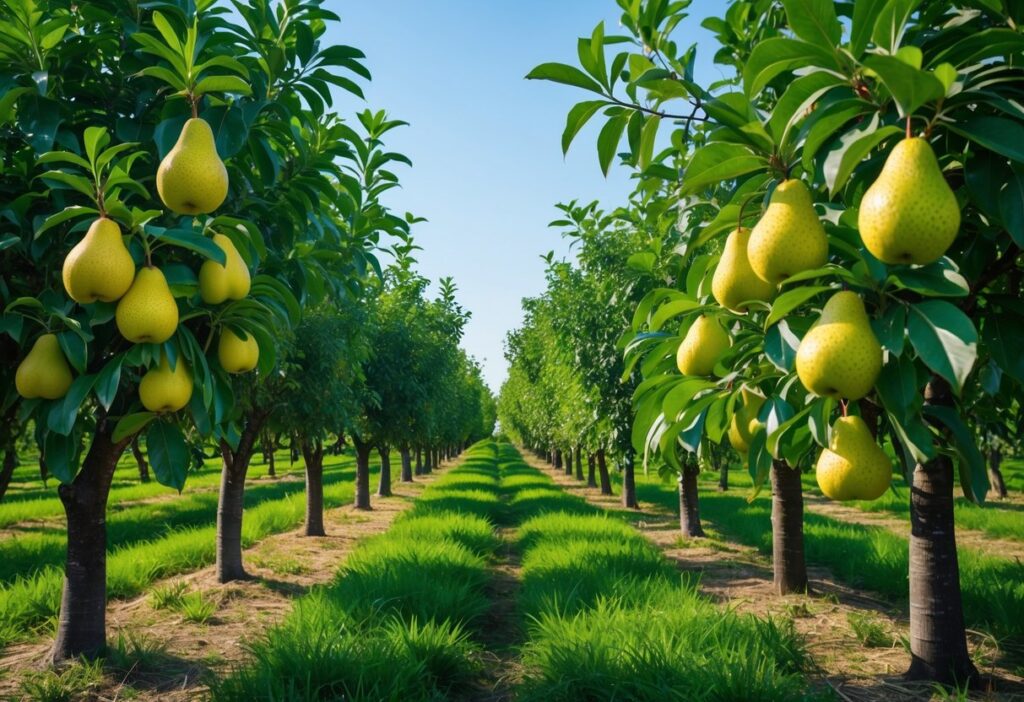
Asian pear trees produce fruit that is crisp and juicy, offering a texture similar to apples with a sweet, mild flavor. They are known for their refreshing taste and firm flesh.
These trees usually begin to bear fruit within three to five years. The fruit ripens in the fall and can be stored for several months without losing quality.
Asian pear trees grow well in many climates and prefer well-drained soil. They benefit from cross-pollination but some varieties are self-fertile. Gardeners appreciate their reliable harvest and low-maintenance care. Learn more about the best varieties of Asian pear trees for gardens at Gardeners’ Path.
7) Dwarf Fruit Trees – perfect for small spaces and containers
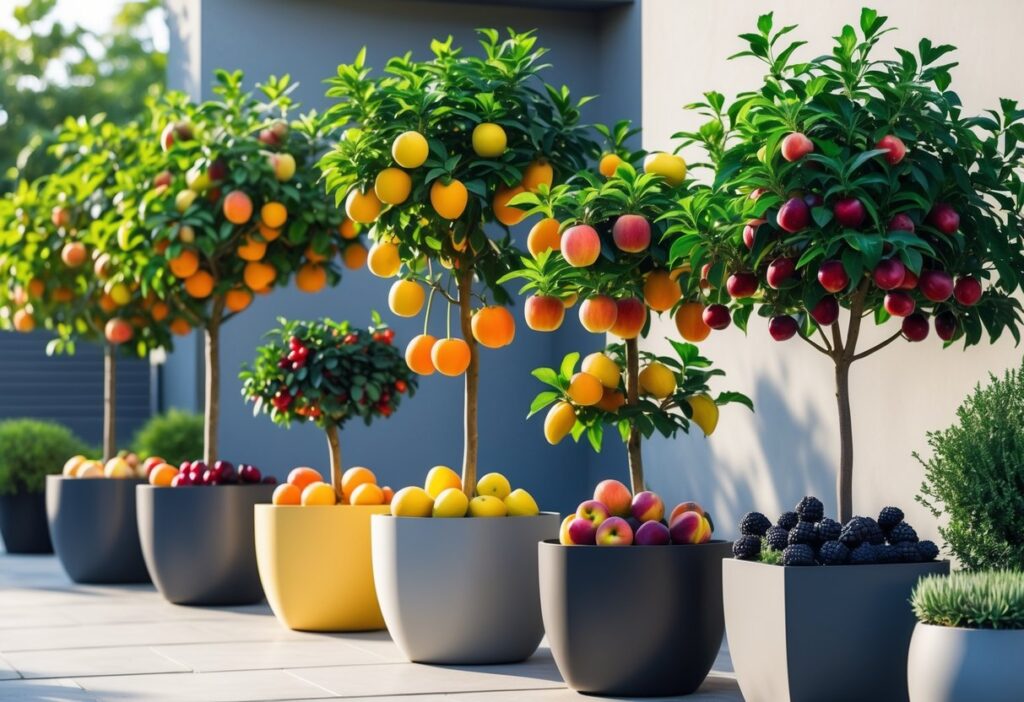
Dwarf fruit trees are ideal for small gardens, patios, or balconies. They grow to about three feet tall, making them easy to manage and fit in tight areas.
These trees produce full-sized fruit despite their smaller size. Many varieties do well in containers, allowing people without yards to grow fresh fruit.
They need at least six hours of sunlight daily to thrive and produce fruit. Dwarf fruit trees also require less pruning and care than larger trees.
For more information on growing these trees in small spaces, see this guide to the best dwarf fruit trees for small spaces.
8) Pawpaw Trees – rare native fruit with tropical flavor

Pawpaw trees are native to North America and produce the largest edible fruit in the region. The fruit has a creamy, custard-like texture and a tropical flavor that tastes like banana, mango, and melon.
These trees grow well in USDA zones 5 to 9 and can provide shade as well as fruit. They are usually grown from seed, with each tree unique and starting to bear fruit in 4 to 6 years.
Pawpaw trees fit well in food forests and woodland gardens. Their tropical taste and rare status make them a special choice for native fruit lovers. Learn more about pawpaw trees from this detailed resource.
Choosing the Right Location
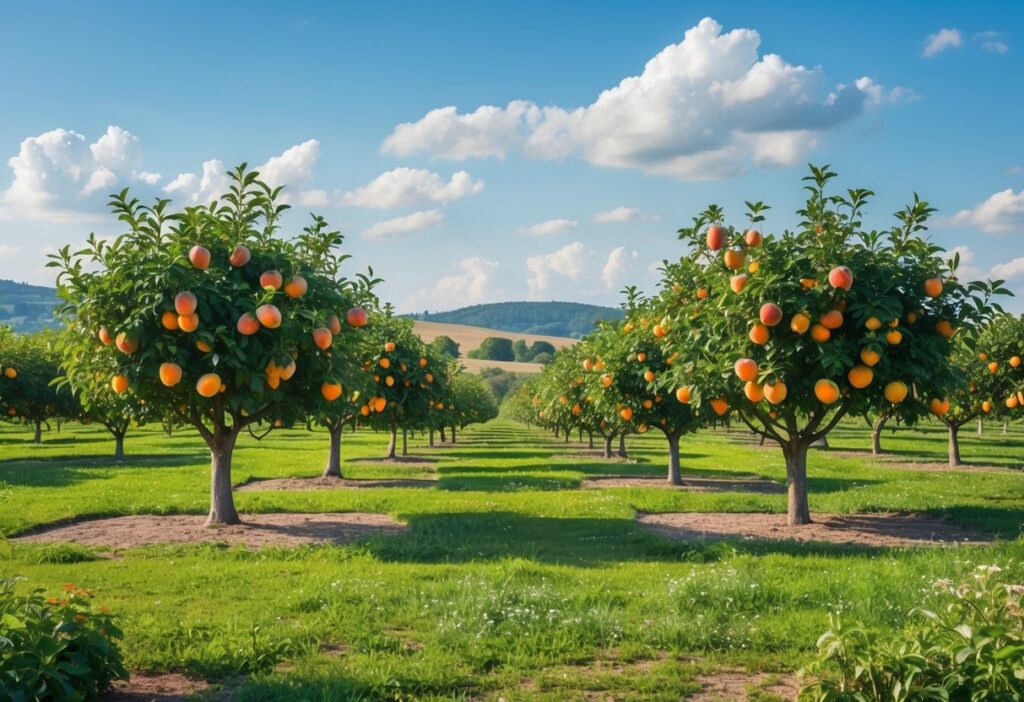
Location greatly affects how well fruit trees grow and produce. Proper soil, sunlight, and climate conditions are essential to healthy trees. Choosing the right spot helps avoid problems like poor growth or low fruit yield.
Soil and Sunlight Requirements
Fruit trees need soil that drains well but still holds moisture. Heavy clay or waterlogged soil can harm roots. Most fruit trees thrive in soil with a pH between 6.0 and 7.0, which is slightly acidic to neutral.
Sunlight is another key factor. Trees require at least 6 to 8 hours of direct sun daily. More sunlight usually means better fruit development. It is important to avoid shady areas, especially from buildings or large trees.
Good airflow around the trees can help reduce disease risk. Planting on slopes or raised beds can improve drainage and air circulation.
Climate Considerations
Climate affects what types of fruit trees will succeed in a given area. Some trees need cold winters to produce fruit, while others prefer warmer temperatures year-round.
Understanding local hardiness zones helps select trees that match the region’s temperature range. For example, apples and cherries grow well in cooler climates, while peaches and figs prefer warmer areas.
Frost pockets or areas prone to late frosts should be avoided to protect blossoms and young fruit. Wind exposure is another factor; strong winds can damage branches and flowers.
Choosing trees suited to local climate conditions ensures better growth and fruit quality.
Care and Maintenance Tips
Proper care keeps fruit trees healthy and productive. Regular attention to pruning shapes the tree and removes unhealthy branches. Consistent fertilization and watering support strong growth and fruit development.
Pruning Best Practices
Pruning should be done during the tree’s dormant season, usually in late winter or early spring. Removing dead, damaged, or crossing branches improves air circulation and light penetration. This helps prevent disease and encourages fruit production.
Focus on shaping young trees by cutting back new growth to promote a strong structure. For mature trees, thin the canopy to allow sunlight to reach all parts. Use clean, sharp tools to make clean cuts and reduce stress on the tree.
Avoid heavy pruning in one session; instead, prune moderately each year. Keep in mind that correct pruning varies slightly by fruit tree type, so knowing specific needs is helpful.
Fertilization and Watering Guidelines
Fruit trees need balanced fertilization to support growth and fruiting. Apply a fertilizer with nitrogen, phosphorus, and potassium in early spring before new growth starts. Follow with light feedings during the growing season as needed.
Watering depends on soil type and weather. Trees generally require deep watering once a week during dry periods. Avoid shallow watering, which encourages weak root growth.
Mulching around the base helps maintain soil moisture and reduces weeds. Be careful not to let mulch touch the trunk to prevent rot.
For detailed guidance, see 8 Essential Tips for Caring for Fruit Trees.
Frequently Asked Questions
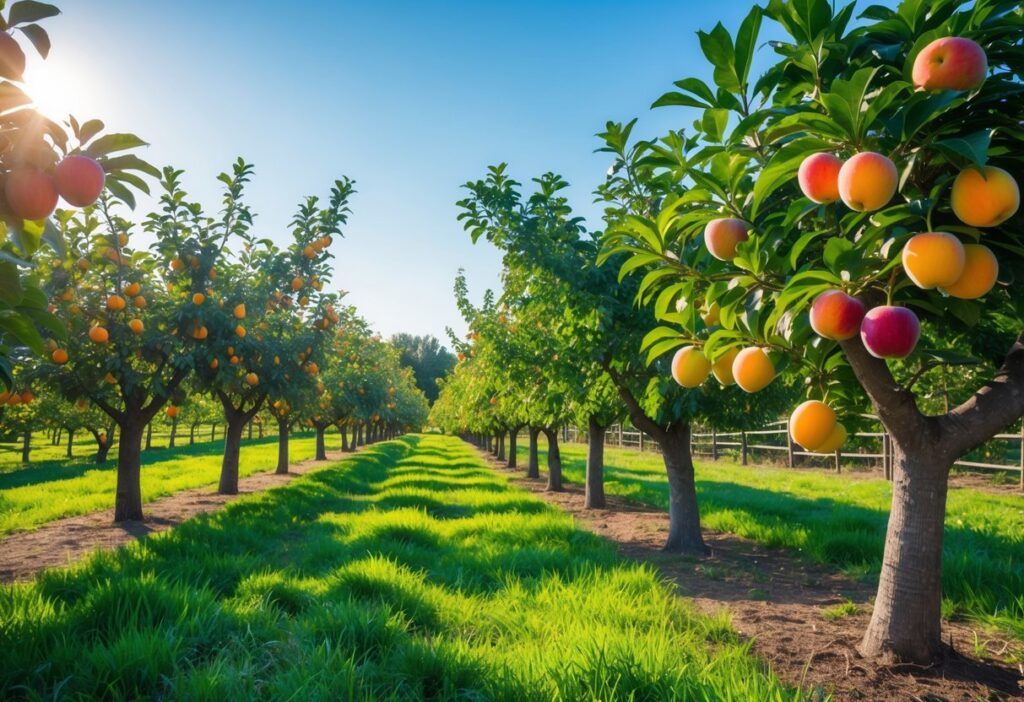
Growing fruit trees requires knowing which varieties suit the climate and what planting tips to follow. Factors like pollination, climate differences between zones, and sourcing trees can affect success.
What are the best self-pollinating fruit trees for zone 8?
Self-pollinating fruit trees reduce the need for multiple trees to produce fruit. In zone 8, peach trees, some varieties of apple trees, and plum trees are good self-pollinators. These trees can produce fruit without needing another tree nearby.
Which fruit trees thrive best in zone 8b?
Zone 8b has warm summers and mild winters, perfect for apple, peach, pear, cherry, and plum trees. Citrus trees and some varieties of fig trees also perform well. These trees handle the temperature range and produce high-quality fruit.
How does the climate in zone 8a affect fruit tree cultivation?
Zone 8a experiences slightly colder winters than 8b, which can affect sensitive trees like some citrus types. Trees such as apples, peaches, and plums still do well with proper winter protection. Cold-hardy varieties are important to avoid frost damage.
What are the recommended fruit trees for growing in zone 9?
Zone 9 is warmer than zone 8, favoring subtropical trees like citrus, figs, and persimmons. Peach and pear trees also grow well but may need extra care in hotter summers. Choosing heat-tolerant varieties is key for success.
Where can one find fruit trees suitable for zone 8 for purchase?
Local nurseries and online retailers specializing in bare root or container fruit trees often offer varieties suited for zone 8. Websites like Humble Abode Nursery provide selections chosen for flavor and climate fit. Buying from trusted sources ensures healthy trees.
What considerations are important when planting fruit trees in Texas zone 8?
Texas zone 8 can vary in soil and rainfall, so testing soil and providing proper drainage are critical. Fruit trees benefit from consistent watering, especially during dry spells. Selecting drought-tolerant and disease-resistant varieties helps trees thrive in Texas conditions.
